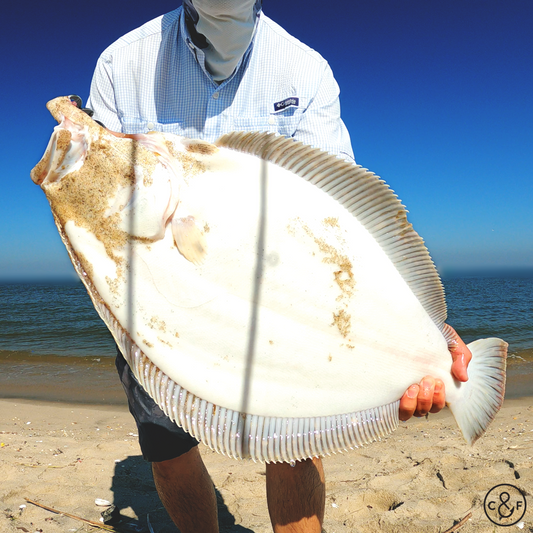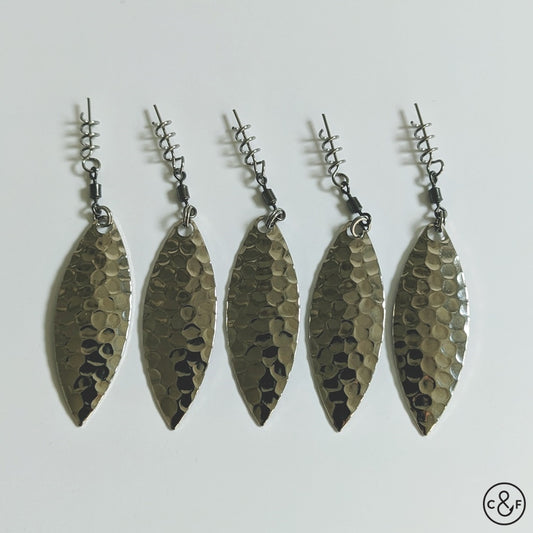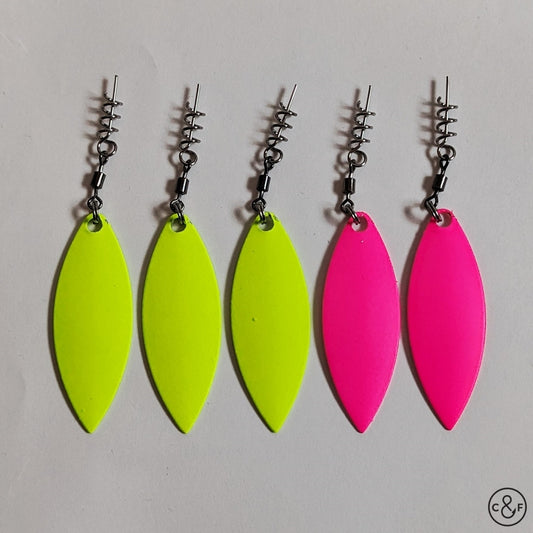Early season, with water temps in the high 40s/lower 50s, can be the most challenging time to consistently catch Summer Flounder with artificial lures. Both the bite window and strike zone shrinks in cold water; nothing is moving all that fast and a fluke's metabolism is extremely slow.
There are a few ways to target flounder in cold water successfully without resorting to using bait (though if your goal is just to catch dinner, now is the time when live killies and dead spearing shine - no shame in it :))
First, consider your jigging cadence. I would start with your "normal" Summertime cadence that produces bites in July/August, but if you're not getting bit, slow it down. Keep your jig lower in the water column, closer to the bottom. Take speed off the upswing, and keep the distance between hops shorter. Also, letting the jig sit on the bottom for 1-2 beats isn't the worst idea in the world when the water is sub 55F.
Starting off with a quicker, "warm water cadence" is important - you might come across a patch of aggressive fluke that respond to quicker movement. You can even try a gentler version of Free Fall Jigging to see if you can elicit any reaction strikes.
One rule of fishing is - always fish the fastest presentation that still gets bit. You don't want to start off slow, catch fish on that slower presentation, and never figure out there is a more aggressive bite that allows you to cover more water quickly.
Having said all that, if all else fails - don't be afraid to drag your jig across the bottom, and let it sit for upwards of 5 seconds, and repeat. The dreaded drag and pause can be boring, but much like fishing a football jig for freshwater bass in the Winter - highly effective.
After adjusting your jigging cadence, consider your Gulp selection. You can and will catch fluke - often the largest fish - by sticking with the 6" Jerk Shad. However, if you just want to bend the rod in the first weeks of May...downsizing to the 4" Minnow or 4" grub can do the trick. I downsized to the 2.5" and 3" Gulp Minnows rigged on a 1/8oz jig head (UL rod/reel, 6lb fluoro leader) in the early weeks of fluke season to good effect.


Finally, the spinner blade modification really plays an outsized role when the water is cold, and doubly so when the water is cold and stained. The blade slows down the fall of your presentation, while adding flash and vibration to further entice lethargic fluke into opening their maws when they don't really feel like moving very far at all.

Remember - Single Jigging isn't just tying on a jig head and pinning a piece of Gulp to it. It's a technique with a lot of nuance, and cold-water jigging presents an opportunity when you can develop various jigging cadences and test for that optimal band of movement, timing, and Gulp choice to get the job done.





